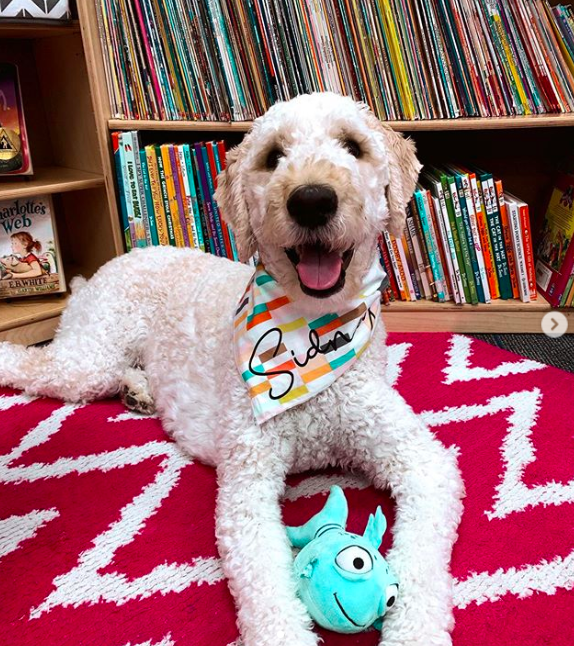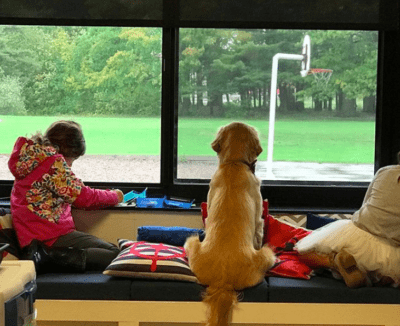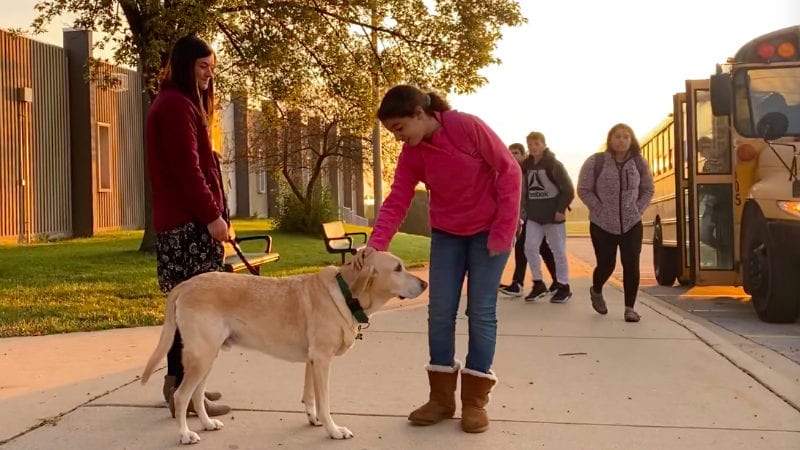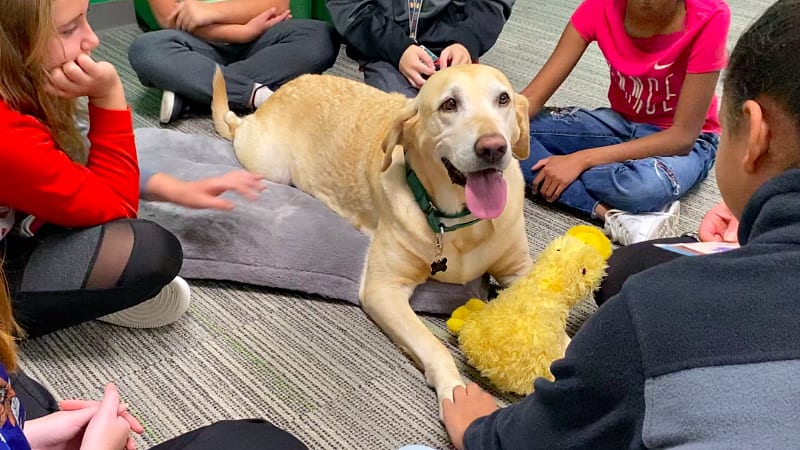Welcoming four-legged friends into the classroom is a growing trend across the country. And research shows that therapy-dog programs provide significant benefits for students. According to the Alliance of Therapy Dogs, “Therapy dogs have been called ‘miracle workers’ because of their calming effect on students and teachers.” Therapy dogs help with everything from trauma to reading interventions to a positive school climate. In addition, they provide particular benefits for autistic children.
So what’s a therapy dog, and how is it different than a service dog?
There is a distinct difference between service dogs and therapy dogs. Service dogs help individuals with specific disabilities, such as visual impairment or seizure disorders. Therapy dogs provide comfort and support. They are trained to use their social instincts and learned social skills to provide health, social-emotional, and cognitive benefits.
Tarah Randazzo is a middle school counselor at Greenfield Middle School in Wisconsin. She has a yellow lab, Archie, a certified therapy dog that she brings with her to school a couple of days each week. She says students love Archie days, and he brings so many positive benefits, like increased attendance, better problem-solving, and just overall calmness to middle school life.
“I’ve seen that for students when they’re dysregulated or really upset that just being in his presence has a huge effect,” Randazzo says.
What are the health benefits of dogs in the classroom?

📷 Image credit: Kreifels Classroom
Dogs in the classroom provide both physical and emotional health benefits for students. According to one study published by the National Institutes of Health (NIH), having a dog present in the classroom promotes a positive mood and provides significant anti-stress effects on the body. In fact, the simple act of petting a dog has the effect of lowering blood pressure and heart rate. Pet therapy also lowers stress hormones, like cortisol, and increases oxytocin. In other words, just being in contact with a therapy dog calms kids down when they’re upset and helps keep their anxiety at bay. And reducing feelings of anxiety and depression enables them to focus on learning.
[contextly_auto_sidebar]
What about social-emotional benefits?

📷 Image credit: Jennifer Taylor
Perhaps the greatest benefit of therapy dogs in the classroom is the effect on students’ social-emotional development. Loving and lovable, dogs are friendly companions and good listeners who make no judgements. Children bond easily with these gentle creatures, helping them feel more connected and confident. This leads to a reduction in negative behavior and aggression.
Additionally, the NIH study states that interacting with a therapy dog has a “social catalyst” effect, which leads to “increased stimulation of social behavior.” These relationships build trust and trustworthiness in children and help them develop a greater capacity for empathy.
There are cognitive benefits, too

📷 Image credit: The Tails of the Tink
Therapy dogs not only have a positive effect on emotional well-being, they have an influence on cognitive development. Interacting with therapy dogs improves students’ reading skills, stimulates memory and problem-solving skills, and even optimizes executive-functioning skills.
In a nutshell, the NIH study summarizes, “The presence of a dog in an educational setting seems to support concentration, attention, motivation, and relaxation reflecting reduction of high stress levels which inhibit effective learning and performance.”
Why is reading with dogs so great?
[embedyt] https://www.youtube.com/watch?v=BKGkxiUoymg[/embedyt]
Reading aloud can be an intimidating process for some kids. Many schools across the country have implemented programs that match students with trained canine reading partners. Even middle school and high school students are getting involved, as you can see in the video above. And it seems to be working. According to a study conducted by the University of California, Davis, students who participated in one program increased their reading fluency by between 12 and 30 percent.
Randazzo says it’s so much than just reading. Working in small groups and reading out loud can do a lot for her middle schoolers’ confidence or comfort in being around others. Then they can take those skills back to the classroom.
“They know that he’s nonjudgmental and he’s a great listener,” Randazzo says. “It not only helps with their literacy skills, but it also gives them a chance to connect with other students. This really helps with their social-emotional learning as well.”
What about the concerns of having dogs in school?

While the benefits of therapy dogs in classrooms are many, there are understandably concerns. Among them:
Cleanliness
Even though dogs have the potential to spread diseases and infections, the risks are minimal if you implement responsible safety procedures. Therapy dogs won’t lick or scratch when working, which greatly decreases the chance of spreading germs. In addition, children should wash their hands before and after interacting with dogs.
Allergies
Trainers bathe and groom therapy dogs before visiting schools, which greatly reduces animal dander. If children in a class have severe allergies, keep the dog in a different location, such as a conference room or office.
Fear
Dogs may frighten some children. Handlers are very careful about introducing children to their dogs on a purely voluntary basis. That being said, one of the most powerful ways to reshape a fearful behavior response is by providing a positive peer behavioral model. In other words, watching other children enjoying and safely interacting with a dog may encourage a fearful child to give it a try.
The experts at therapyanimals.org recommend using a safe, reliable agency that carefully selects and properly trains their animals. A registered therapy dog team will have their own insurance and will work without a cost to the school. Some of the organizations they recommend include Pet Partners, Alliance of Therapy Dogs, and R.E.A.D. – Reading Education Assistance Dogs
Introducing your class to a therapy dog may be one of the most memorable experiences of your students’ school years. For more information and a checklist to help you get started, read this article from School Therapy Dogs.
We’d love to hear—have you ever used dogs in the classroom? If so, come share your experience in our WeAreTeachers HELPLINE group on Facebook.
Plus, this teacher brings her two pigs to class every day.

